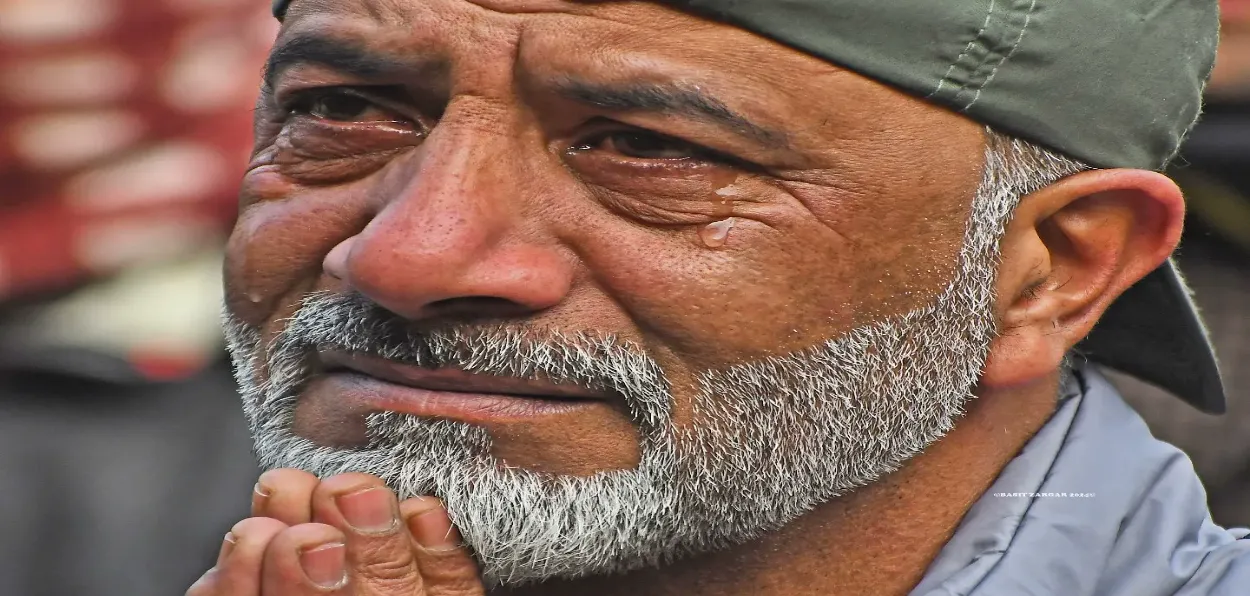
Ehsan Fazili/ Srinagar
As Chillai Kalaan, the 40-day harshest period of winter, is going to enter its last quarter, Kashmiris await snowfall with bated breath to avert water shortages in summer, sustain tourism industry and break the present deadly chill.
In the Valley of Kashmir, winter is marked by three phases, spreading over 70 days; it begins with the 40-day Chillai Kalaan on December 21, followed by 20 days of Chillai Khurd and then the 10-day Chilla Bacha - the name of the phases of winter is a metaphor for the old, young, and the child respectively.
Snowfall, especially during Chillai Kalaan is always welcome in Kashmir for lower temperatures of this season don’t result in melting of the snow. The snowfall of this season helps glaciers swell and sustain rivers and other water channels during summer.
Though snowfall in power-deficit places like Kashmir makes the life of common people difficult, Kashmiris celebrate it for the bounties it brings along.
A new daughter-in-law plays a prank on elders by serving them a kangri filled with freshly fallen snow to the elders of the family and wishes them “Nov sheen Mubarak” Greetings of the fresh snowfall. The elders in return give her gifts in cash or kind.
The snow also gives respite from the sub-zero temperatures across Kashmir.
A day of Chilai Kalan in Srinagar
The adage “Wande tchale sheen galle, beyi yeyi bahaar” (Winter will be over, snow will melt and spring will return) goes well amid the ongoing wait for snowfall with tourists awaiting the snowfall to witness Kashmir in its winter attire.
For several years now, Chillai Kalan festivals have been organised at the beginning of the season across towns and cities of Kashmir. The idea behind these is to reclaim the cultural and environmental importance of snowfall and make youth welcome the season.
The first day of Chillai Kalan is also celebrated as International Pheran Day over the last few years, with many people including locals and tourists wearing varied styles of the traditional winter attire of Kashmir. It has a wide social acceptability though there is no institution to have designated the day as “Pheran Day”.
Weather gods, however, have kept Kashmiris awaiting the fascination of snowfall so far this season, as weathermen have predicted continued dry and cold conditions throughout this month. Tourists from outside the valley, who have been thronging Kashmir, in larger numbers during the past few years, are also missing Kashmir without snow, particularly in the major resorts of Gulmarg, Pahalgam, Sonmarg, and Dodhpathri.
A major worry of the masses in Kashmir is that the delay in snowfall would lead to water shortages in the summer months ahead. Heavy snow accumulated on the high mountains in winter remains the main source of water for drinking water, irrigating crops (mainly paddy), and for hydro-power generation through the remaining part of the year.
For the environmentalists, it is also worrying as lesser accumulation would lead to an increase in the melting down of glaciers.
Many people have taken to social media to express their wait in fascination with watching snowflakes and worries about the decline in water resources ahead. A Kashmiri writer scholar based in Lowell Massachusetts (US), taking to the FB in Kashmiri script about a week ago, waiting to know about snowfall in Kashmir asked “Kasheeri maa peyo sheen” (Did Kashmir have any snowfall?)
A boatman showing the frozen crust of the Dal Lake in Srinagar
He says, “It is snowing here, will continue till tomorrow. It would snow just like this during my childhood days in Kashmir”, while posting a few photos of a snow-clad (about one or two ft deep) locality in his neighbourhood. In response, dozens of people from the valley have expressed their concerns and recalled their past experiences with the snowfall in winter.
A prominent literary figure of Kashmir, Amin Bhat has shared his three years’ old photographs amid snowfall around, which had the caption “Another white day”. Sharing his old photograph, Bhat has posted: “Waiting anxiously for the past 40 days for the snowfall this three years back memory emerged from FB as a psychological relief. Sharing it with the prayer that we may have this year’s white day soon”, he added.
Winters as well as summers in Kashmir offer a fascinating view of the valley surrounded by the Himalayas. It has its effects both on the affluent and others. The poor have been suffering for want of adequate facilities like rations, wood and charcoal, woolens and cozy houses, and most importantly regular power supply in winter, while the affluent spent money on heating their houses with oil heaters and bukharis (wood-fired heaters). Many leave the Valley for three to four months.
Special cuisines like Harissa or other delicacies are winter specialties that are relished by people.
Kashmiri writer and orator, Zareef Ahmad Zareef says, “For the poor living through winters is a struggle and it’s a reverse experience for the upper class”. He recalls that many decades ago the Government would provide supplies of wood, charcoal, Kangris, and other essentials for the common masses at ration depots during winter months.
This would mainly depend on the smooth flow of traffic on the 300 km long Srinagar-Jammu national highway, the only lifeline to the valley. The traffic would be blocked usually due to snowfall, mainly along Banihal Pass and Patni Top leading to a short supply of vegetables, meat, and other essentials.
ALSO READ: Indonesian Muslims celebrate their Hindu-Buddhist past, Hamid Naseem shares experiences
To brace this situation, Kashmiris have a tradition of cooking sub-dried vegetables like collard green, bottled gourd, brinjal, turnip, radish, tomatoes, etc. Though due to better transportation facilities, the Valley doesn’t face prolonged or actual shortages, yet the people relish dried vegetables as their traditional cuisine.
